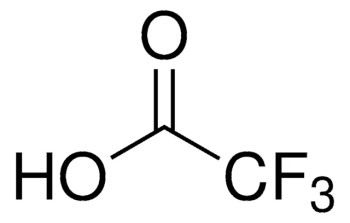Description
Methanesulfonic acid ≥99.0%, 500ML
-
CAS Number 75-75-2
-
Linear Formula CH3SO3H
-
Molecular Weight 96.11
-
Beilstein/REAXYS Number 1446024
-
EC Number 200-898-6
-
MDL number MFCD00007518
-
PubChem Substance ID 24870726

-
NACRES NA.21
Properties
| Related Categories | Acids, Acids & Bases, Camostat Mesylate, Chemical Synthesis, Chemicals for the synthesis of candidate COVID-19 treatments,
Organic Acids, Synthetic Reagents
Less... |
| Quality Level | 200 |
| vapor density | 3.3 (vs air) |
| vapor pressure | 1 mmHg ( 20 °C) |
| assay | ≥99.0% |
| refractive index | n20/D 1.429 (lit.) |
| bp | 167 °C/10 mmHg (lit.) |
| mp | 17-19 °C (lit.) |
| solubility | water: soluble 1,000 g/L at 20 °C |
| density | 1.481 g/mL at 25 °C (lit.) |
| SMILES string | O=S(O)(C)=O |
| InChI | 1S/CH4O3S/c1-5(2,3)4/h1H3,(H,2,3,4) |
| InChI key | AFVFQIVMOAPDHO-UHFFFAOYSA-N |
General description
Methanesulfonic acid (MSA) is a strong organic acid. The chemical oxidation of dimetyl sulfide in the atmosphere leads to the formation of MSA in large quantities.[1] MSA undergoes biodegradation by forming CO2 and sulphate. It is considered a green acid as it is less toxic and corrosive in comparison to mineral acids.1[2] The aqueous MSA solution has been considered a model electrolyte for electrochemical processes.[3]
Application
Methanesulfonic acid may be used:
• As a catalyst to produce linear alkylbenzenes by the addition reaction between long-chain olefins and benzene.[4]
• To prepare polyaniline (PANI)/graphene composites with enhanced thermal and electrical properties.[5]
• As a catalyst for the transformation of glucose/xylose mixtures to levulinic acid and furfural.[6]
Packaging
2.5 L in glass bottle
5 L in poly drum
5, 25, 100, 500 mL in glass bottle





